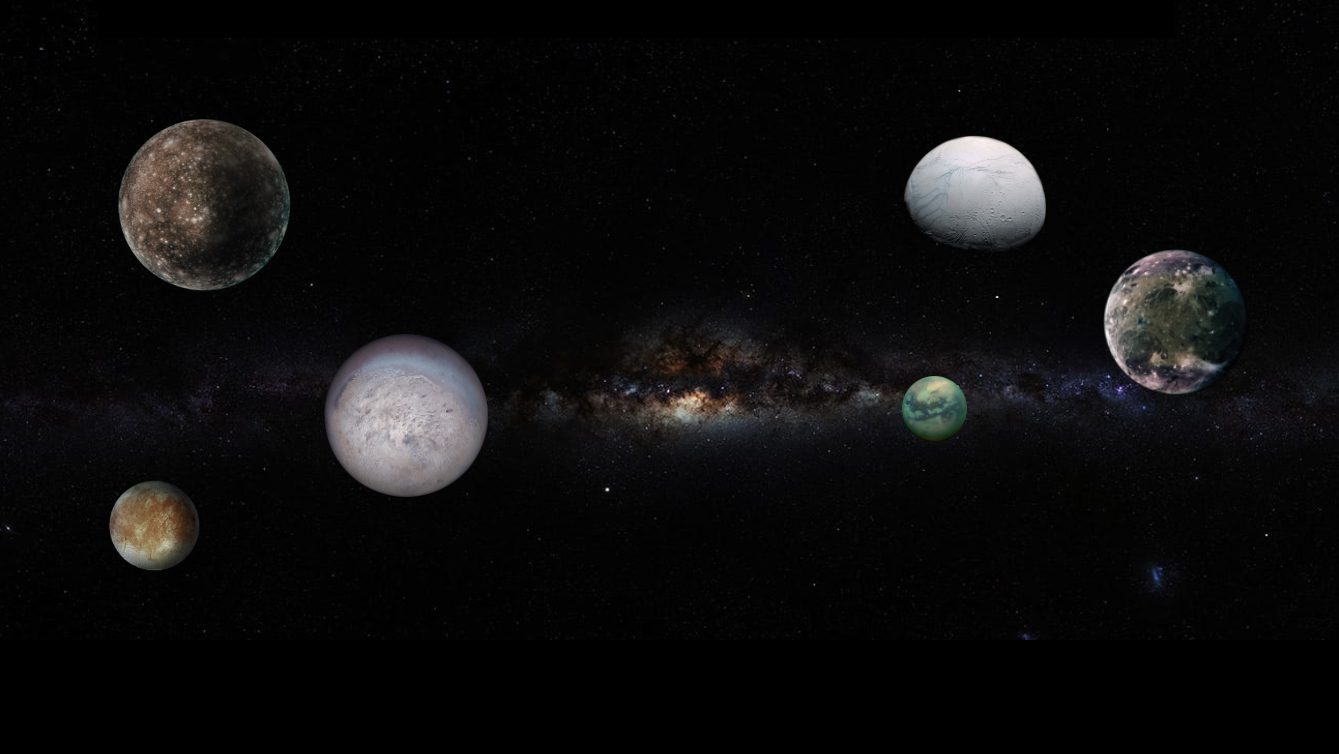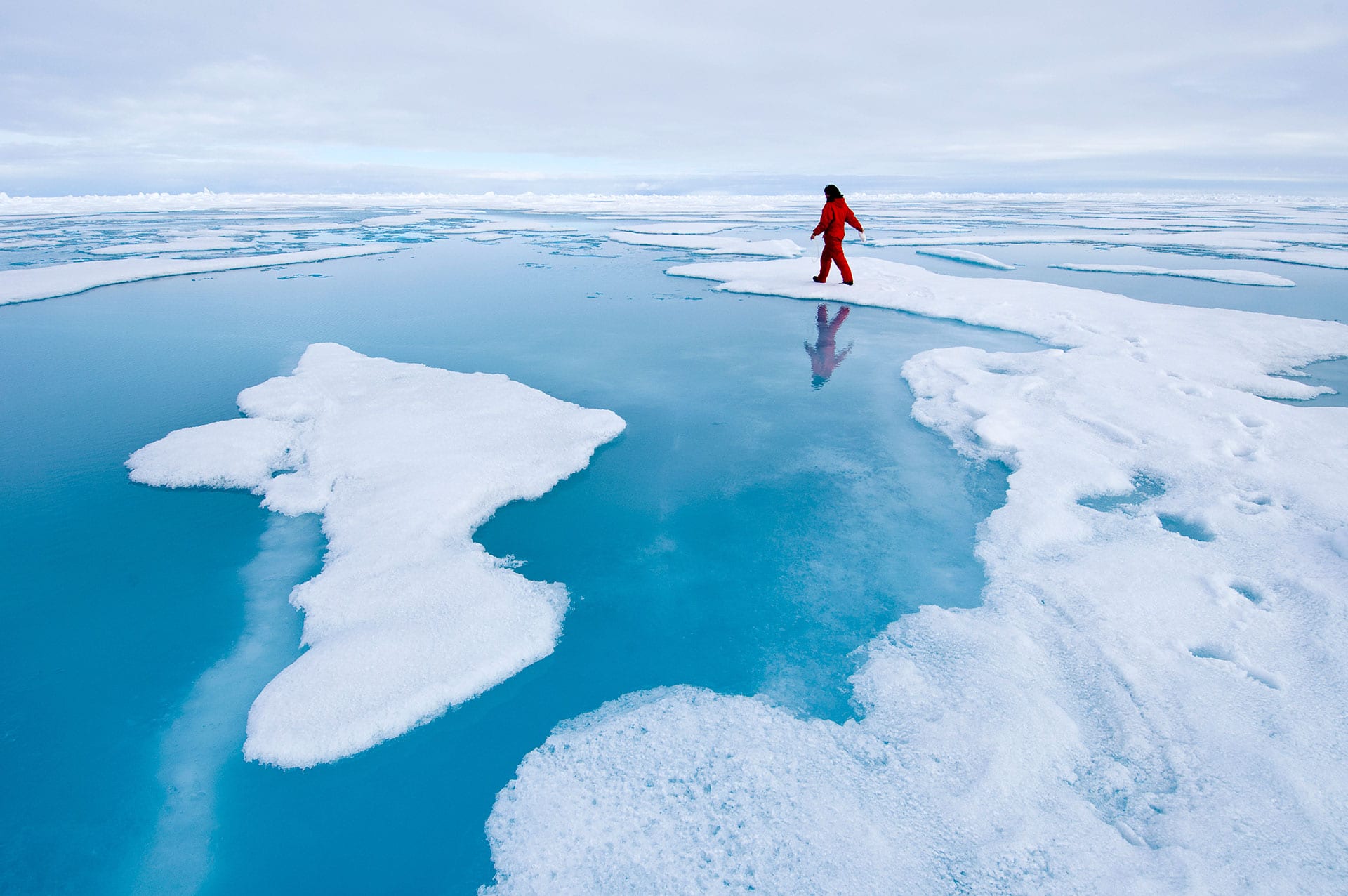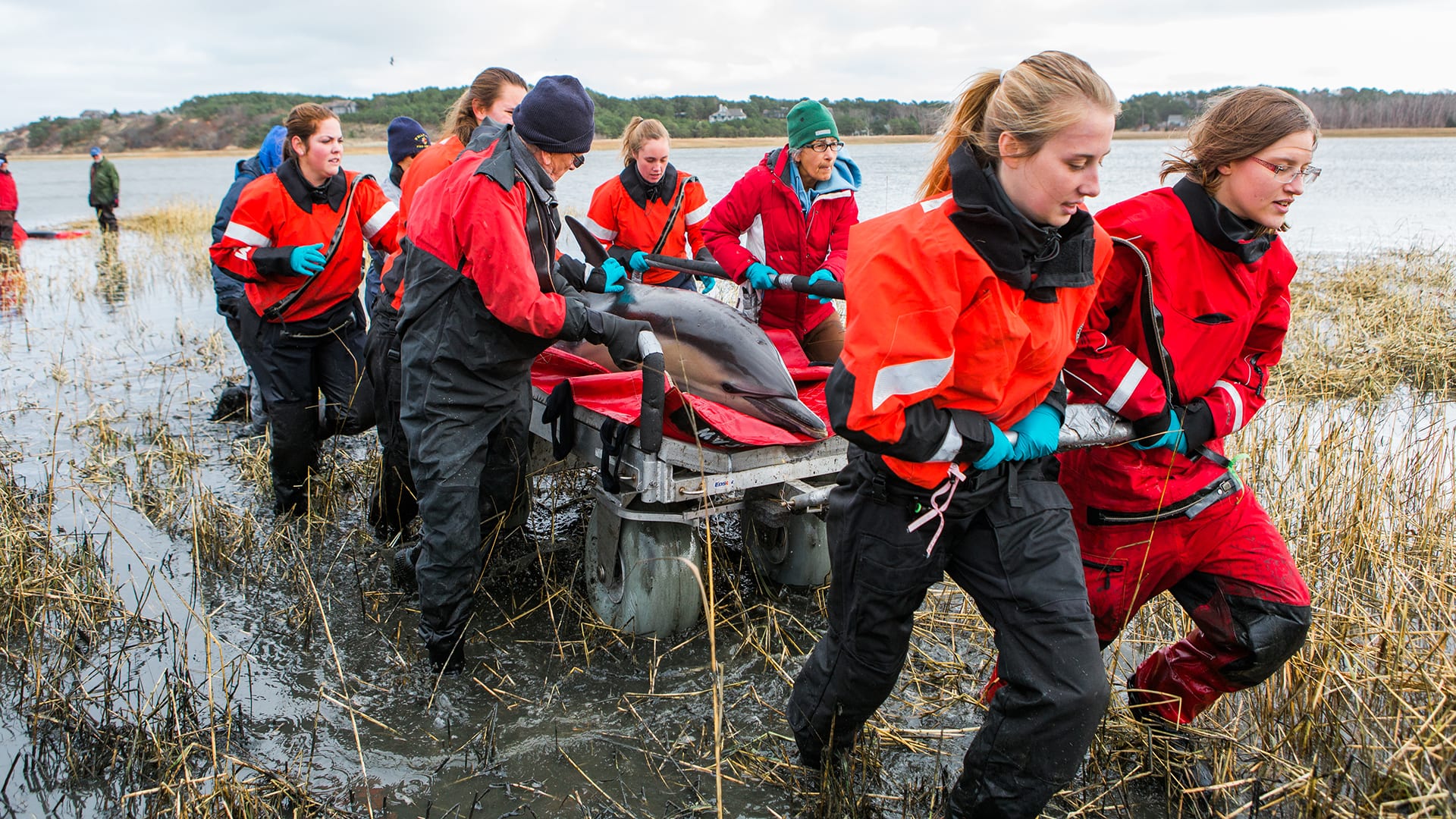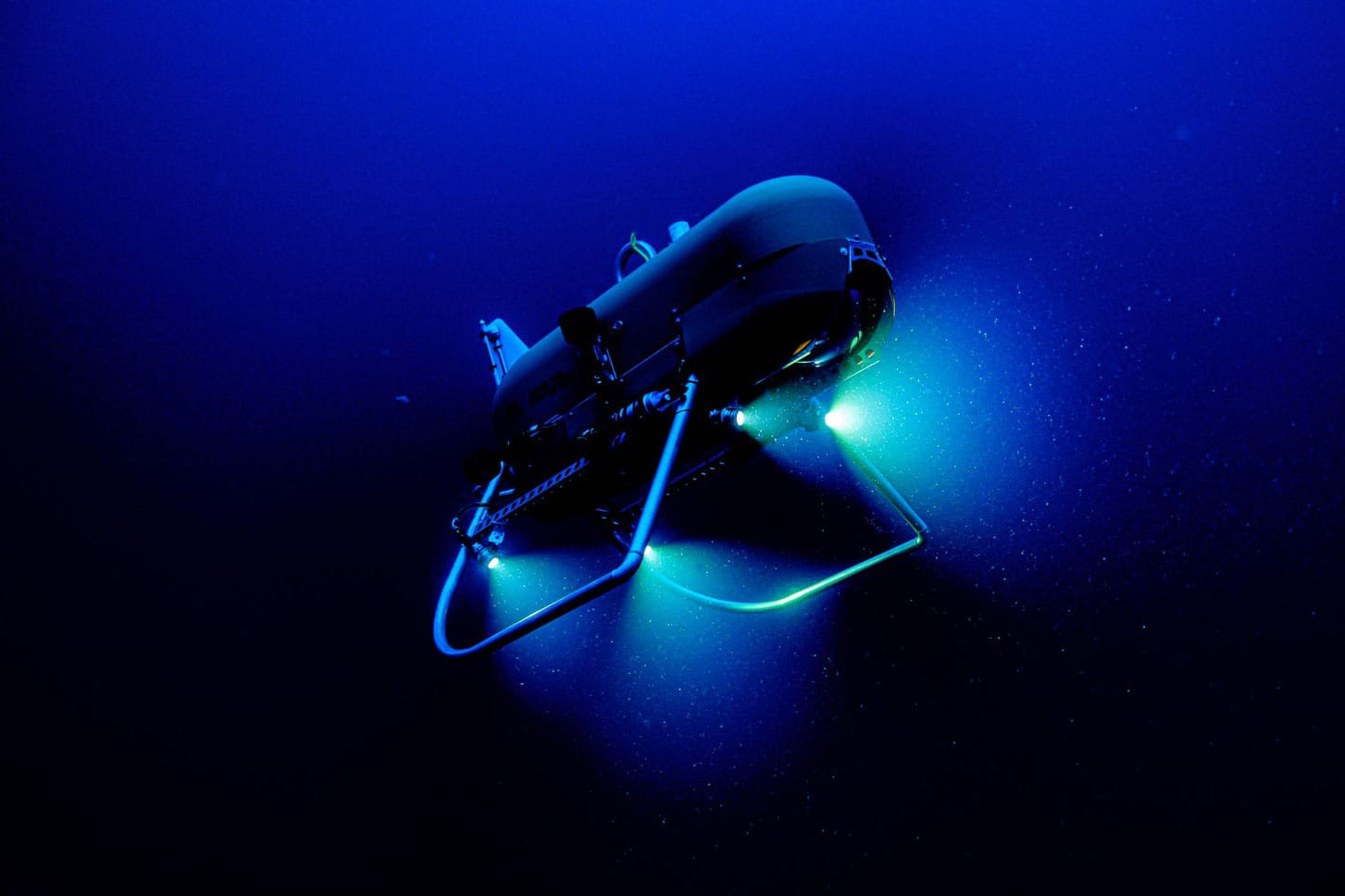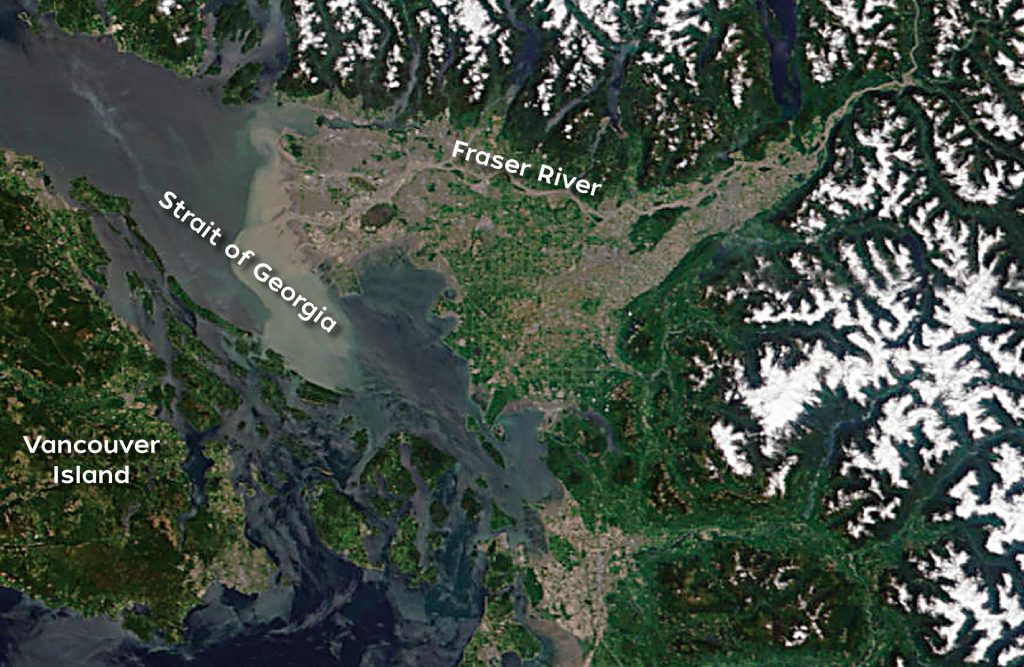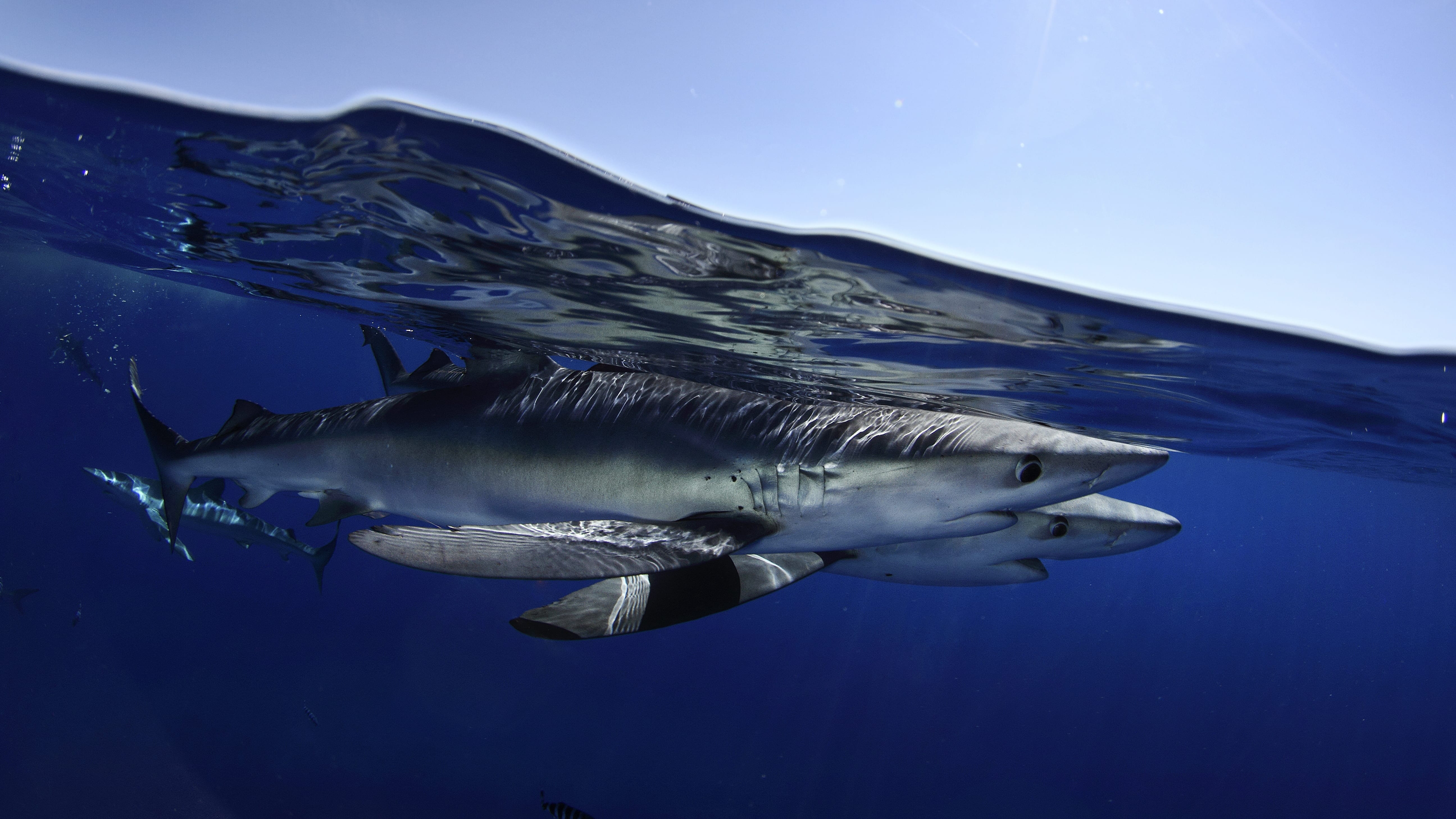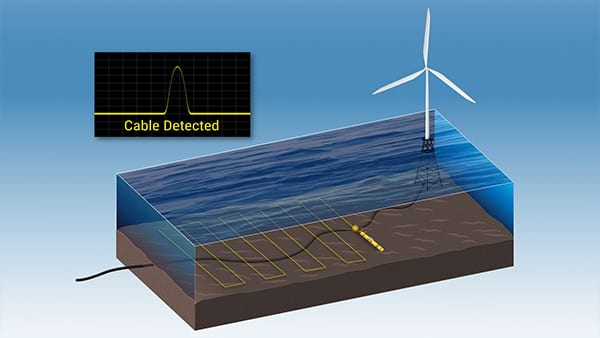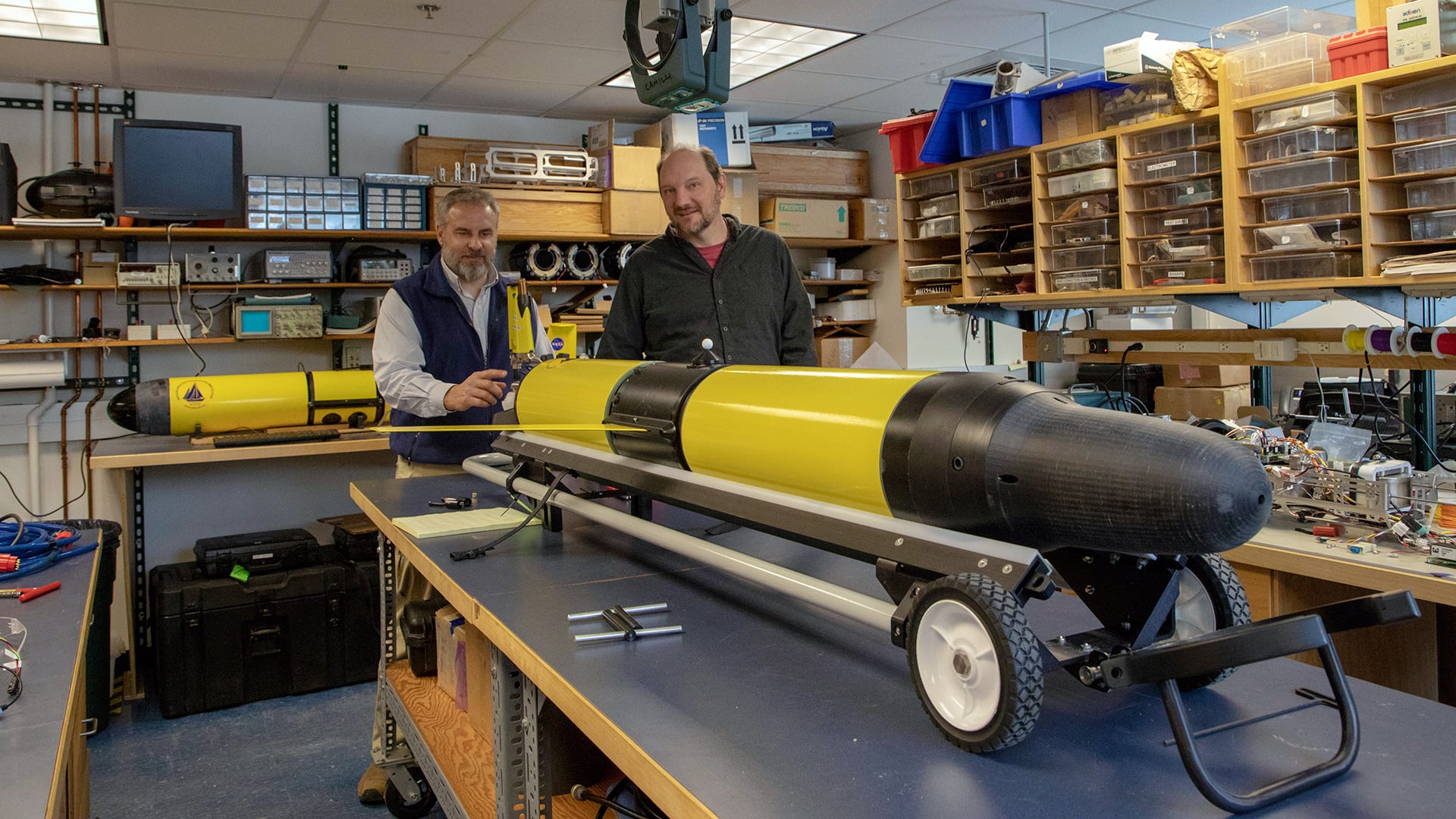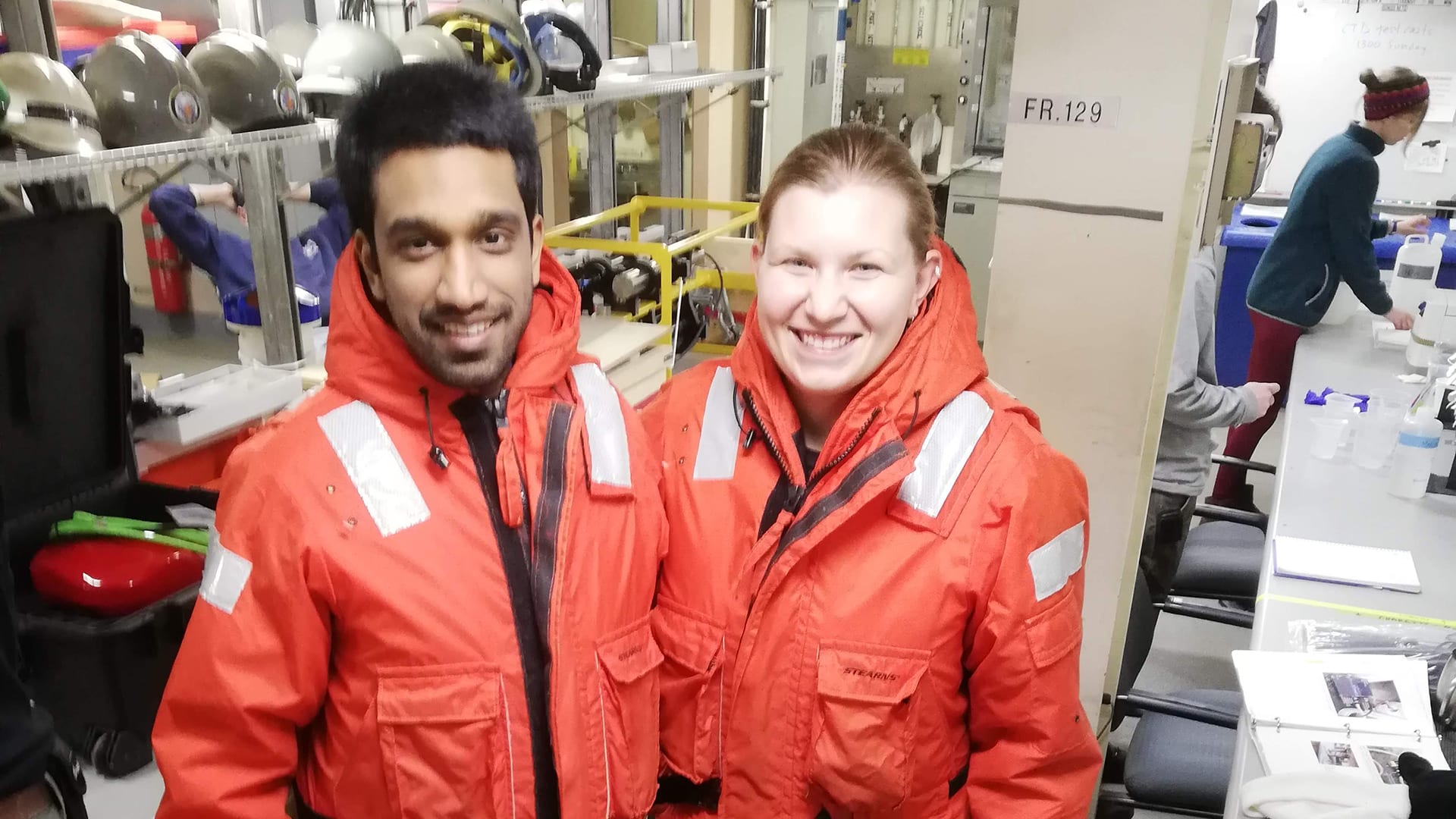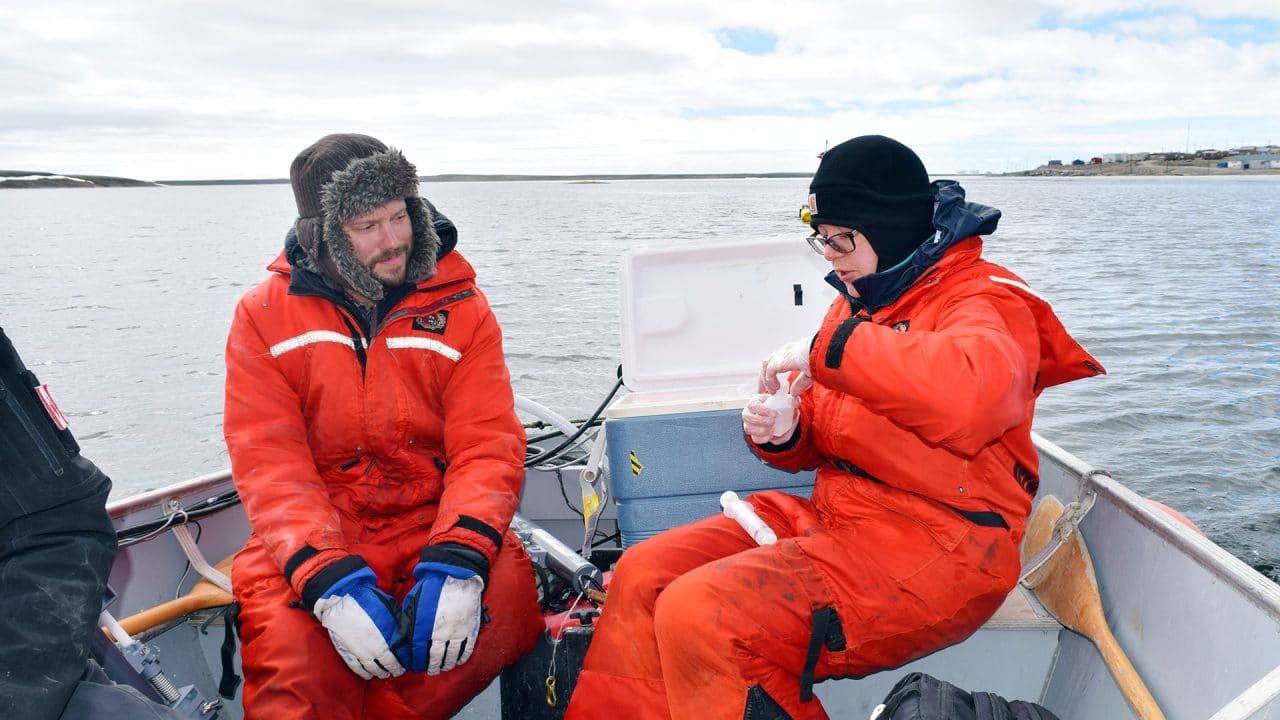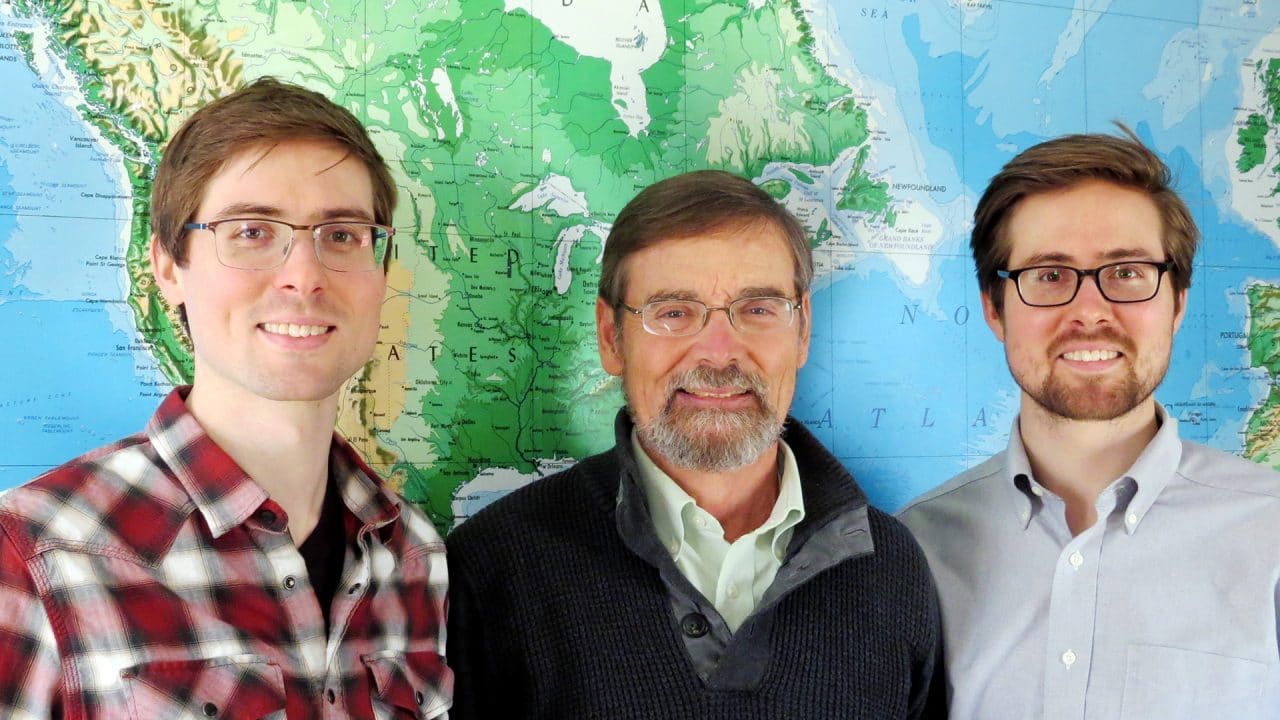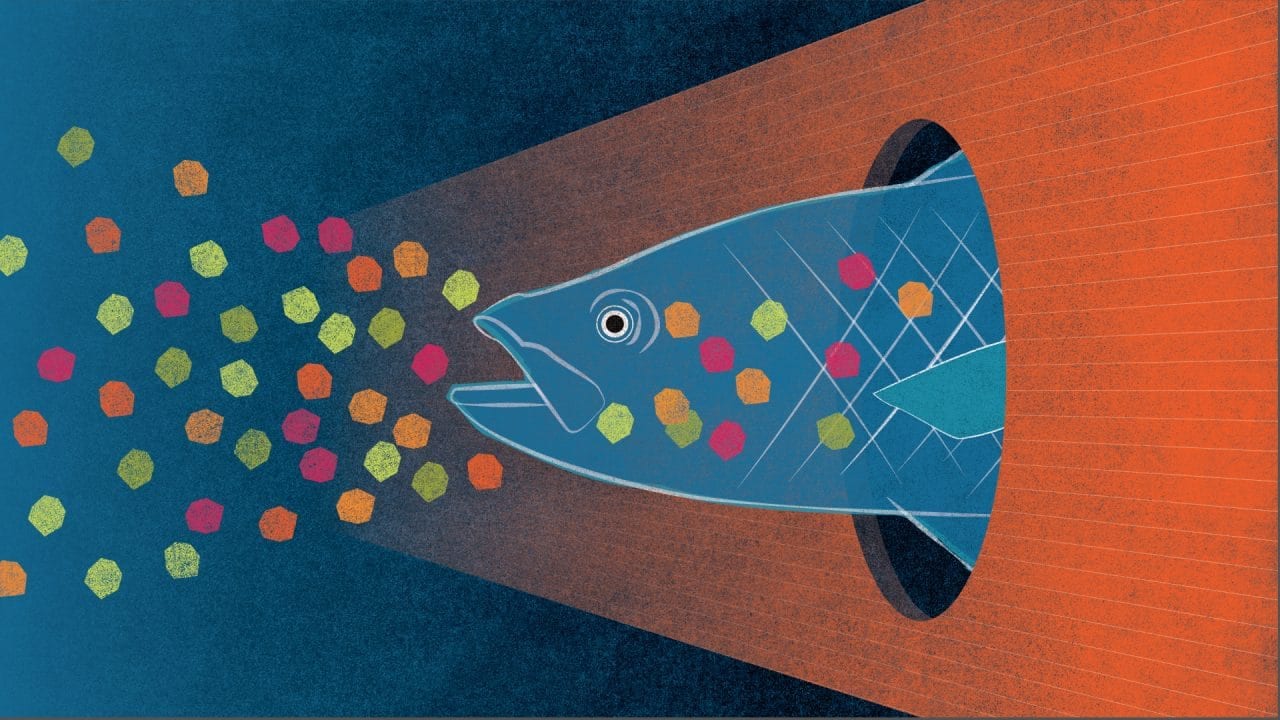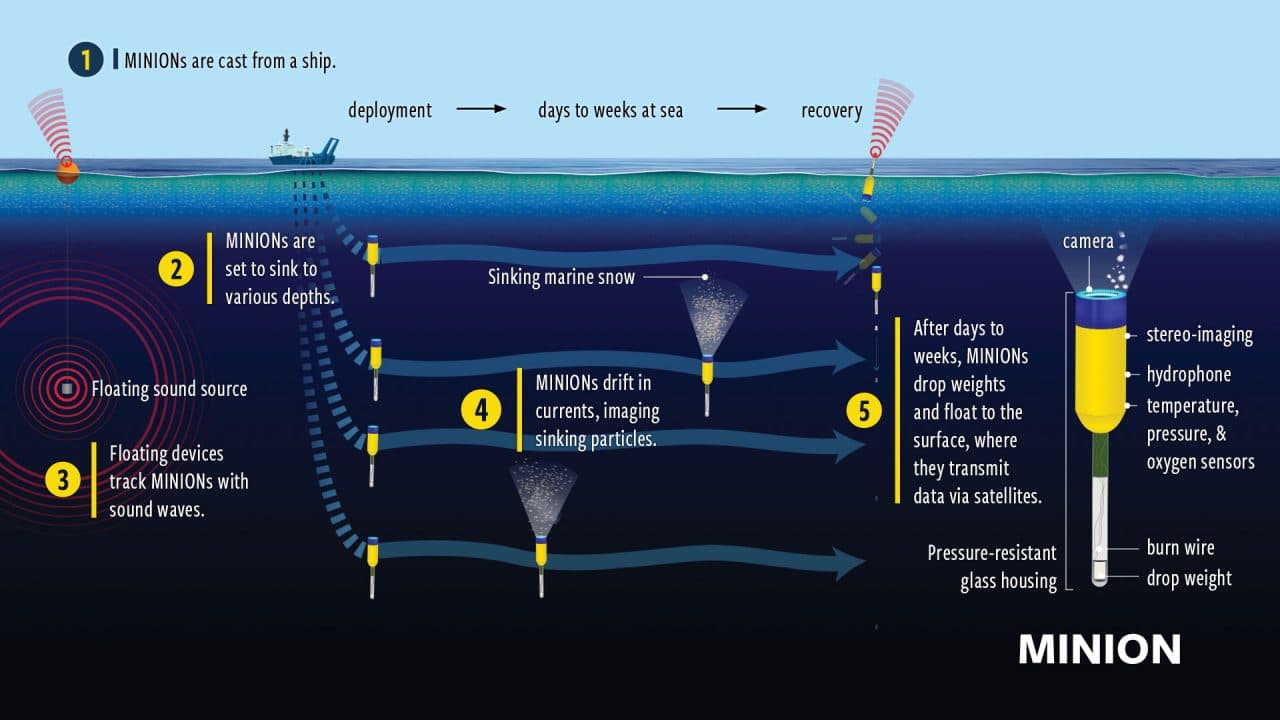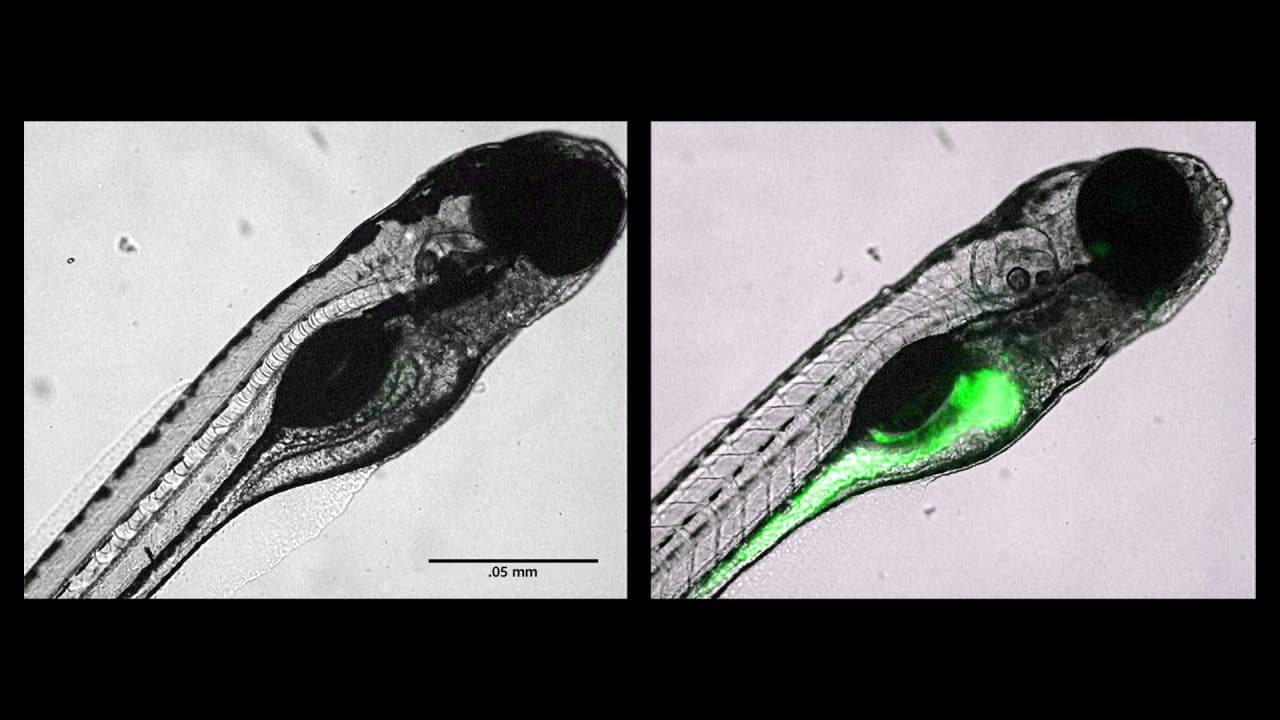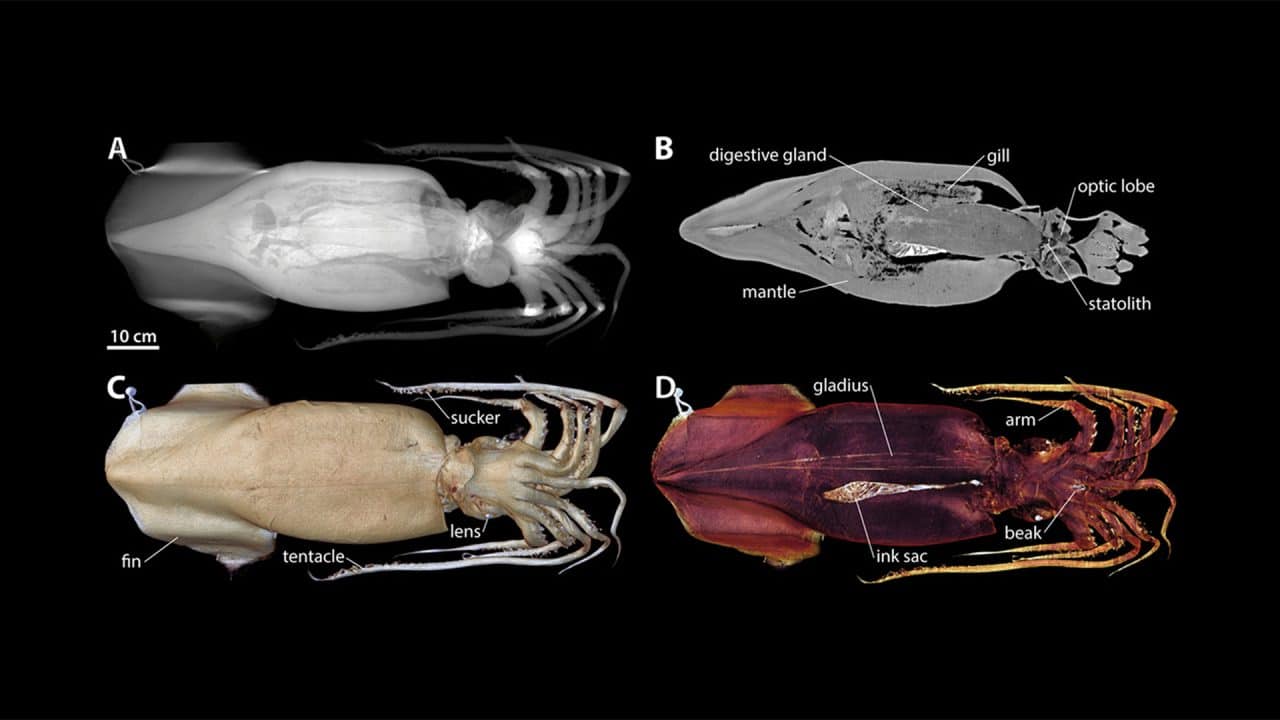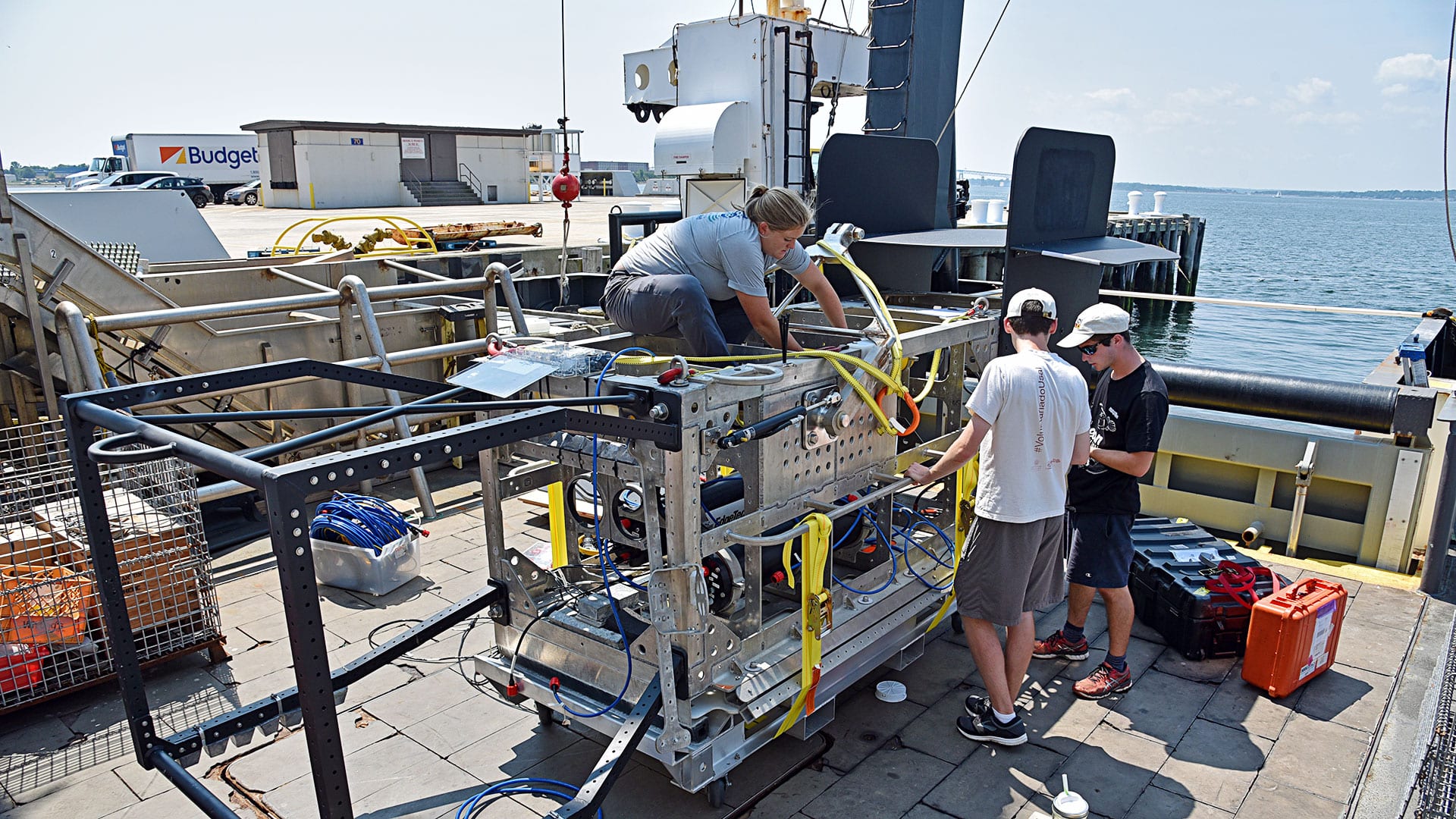Feature
Looking into the Future
WHOI researchers discuss various ways that ocean science and technology are enabling a deeper understanding of our blue planet
Read MoreUncharted Waters
Our global ocean will change dramatically over the next few decades. What might it look like, and how will humans adapt?
Read MoreAre We Alone?
To discover life in space, we look to our ocean extremes to understand what it’s capable of withstanding. The Exploring Ocean Worlds Program brings WHOI’s marine expertise into the far reaches of our solar system.
Read MoreCelebrating an oceanographic life
WHOI looks back at the legacy of co-founder of MIT-WHOI Joint Program, former Director of Research and Provost at WHOI, Art Maxwell
Read MoreOceans of Change
“THE SEA NEVER CHANGES, AND ITS WORKS, FOR ALL THE TALK OF MEN, ARE WRAPPED IN MYSTERY.” So observed the narrator of “Typhoon,” Joseph Conrad’s 1902 novella. But today, we…
Read MoreBioacoustic alarms are sounding on Cape Cod
The International Fund for Animal Welfare (IFAW) and its Marine Mammal Rescue Team in Yarmouth, Mass. have responded to a record high of more than 464 marine mammals stranded on Cape Cod since January this year. Researchers at Woods Hole Oceanographic Institution (WHOI) believe patterns from animal sound data may be the key to curbing these numbers.
Read MoreThe Rise of Orpheus
WHOI’s new deep-sea autonomous underwater vehicle moves one step closer to exploring the hadal zone—the deepest region of the ocean—to search for new clues about the limits of life on Earth, and possibly beyond.
Read MoreRapid Response at Sea
As sea ice continues to melt in the Arctic and oil exploration expands in the region, the possibility of an oil spill occurring under ice is higher than ever. To help first responders cope with oil trapped under ice, ocean engineers are developing undersea vehicles that can map oil spills to improve situational awareness and decision making during an emergency.
Read MoreWhere the Rivers Meet the Sea
Estuaries are the borderlands between salt and freshwater environments, and they are incredibly diverse both biologically and physically. The diversity and the high energy of the ecosystem make estuaries remarkably resilient.
Read MoreA tunnel to the Twilight Zone
Scientists track hungry blue sharks as they ride swirling currents down to the ocean twilight zone—a layer of the ocean containing the largest fish biomass on Earth
Read MoreMining climate clues from our whaling past
Climate scientists work with historians to tap weather records from old New England whaling logbooks. They hope to leverage the historical data to gain new insights into modern-day climate conditions.
Read MoreA new way of “seeing” offshore wind power cables
Eager to share best practices and technical know-how with the offshore wind sector, WHOI researchers test out an autonomous underwater vehicle (AUVs)—a staple of oceanographic research—to see if it can perform subsea cable surveys faster and more economically than using large and expensive ships.
Read MoreNavigating the Changing Arctic
New, fully autonomous glider will collect critical-but-scarce ice thickness measurements from below the surface of the Arctic ocean.
Read MoreTracking Radium in the Arctic
Jessica Dabrowski is an ocean chemist and a second-year graduate student in the MIT/WHOI Joint Program in Oceanography and Applied Ocean Sciences & Engineering. She travelled to the Arctic for…
Read MoreMeet the ChemYak!
WHOI scientist Anna Michel discusses our new ocean surface robot.
Read MoreA Rainfall Forecast Worth its Salt
WHOI scientist Ray Schmitt and sons take top prize in rainfall forecasting competition.
Read MoreMicroplastics in the Ocean – Separating Fact from Fiction
WHOI scientists weigh in on the state of marine microplastics science.
Read MoreMesobot, Follow that Jellyfish!
WHO scientists and engineers are developing an innovative autonomous deep-sea vehicle with hovering and manuevering capabilities that will allow it to follow animals without disturbing their environment and behavior.
Read MoreChasing Ocean ‘Snowflakes’
Scientists envision putting a flotilla of devices in the ocean to act as “eyes” that can track the “marine snow” that drifts down into the ocean.
Read MoreParticles on the Move
An MIT-WHOI Joint Program student investigates what happens to nanoplastics once they’re ingested by fish.
Read MoreNew Techniques Open Window into Anatomy of Mollusks
Woods Hole Oceanographic Institution (WHOI) scientists are using advanced medical imaging techniques and diagnostic tools to reveal the internal structures of a wide range of marine animals. Most recently they…
Read MoreRound Up the Unusual Suspects
A variety of genetic techniques are advancing ocean scientists’ ability to identify which organisms live where in the vast ocean twilight zone and to find previously unknown species.
Read MoreA ‘Ticking Time Bomb’ in the Arctic
Scientists discover that the amount of heat in a major Arctic Ocean circulation system has doubled over the past 30 years. If the temperatures continue to spike, it could eventually spell trouble for the ice above.
Read MoreThe Deep-See Peers into the Depths
Decades of research from many WHOI scientists and engineers have culminated in a multifaceted vehicle to explore deep-sea marine life.
Read More


